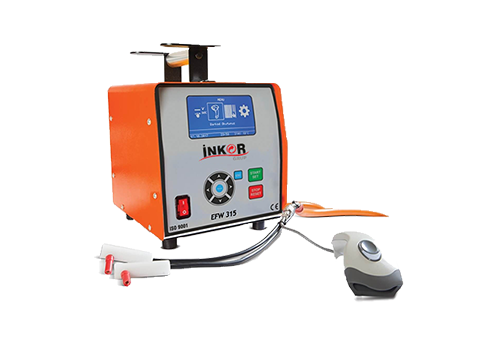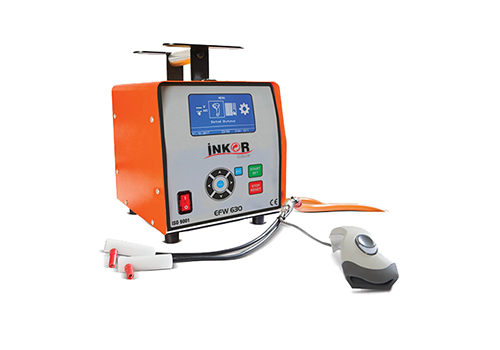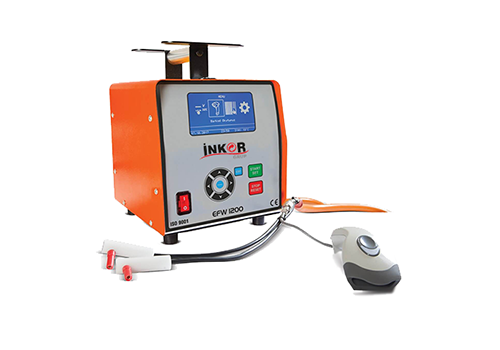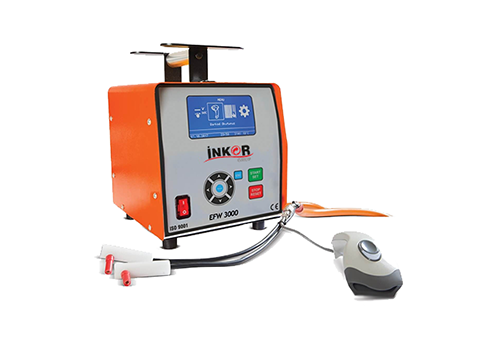Electrofusion Welding Machines

315 Electrofusion
Welding Machine

630 Electrofusion
Welding Machine

1200 Electrofusion
Welding Machine

3000 Electrofusion
Welding Machine
Operating Method of Electrofusion Welding Machines
In the electrofusion method, pipes inserted into the fittings are connected to the welding machine. These machines work with a barcode system: heat is applied according to the information read from the barcode on the fitting. In this way, HDPE pipes and their electrofusion fittings are joined together.
The method is used to join HDPE pipes from 20 mm up to 1 600 mm in diameter. After the weld is completed, a weld report can be generated. The welding machine is powered by 220 V electricity and operates automatically.
Where Are Electrofusion Welding Machines Used?
Electrofusion welding can be carried out wherever HDPE pipes are employed—metro water supply, plumbing, drinking-water networks, building services, hydraulics, construction and engineering. Thanks to their light weight, electrofusion machines are easy to handle and reduce transport costs. With the help of their fittings they play a key role in pipe repairs and provide long-lasting joints.
Technical Features
As HDPE pipe electrofusion welding machines, they offer many advantages: they can join pipes made of PE, PP and PVDF materials and connect spigot-ended pipes and fittings from 40 mm up to 2 800 mm in diameter.
These machines adapt to every worksite. Because they are easy to carry, they offer great convenience to the operator and the contractor. A joint produced by the electrofusion method is durable and requires no subsequent inspection; it preserves the pipe structure and causes no damage. Thanks to the technology provided, the welding operation is completed quickly.
What Are Electrofusion Fittings?
Various attachments can be used in electrofusion welding. Connection elements for HDPE pipe fusion include: EF Equal Tee, EF Elbow, EF Reducing Tee, EF Reducer, EF Tapping Tee.
Types of Electrofusion Welding Machines
Electrofusion welding machines are available in sizes EFW630 (Ø 20–630) and EFW1200 (Ø 20–1200). They range from the EFW630 plastic-pipe electrofusion welding machine up to the EFW1200 model. The current capacity of the EFW630 HDPE pipe welding machine is 220 V, 0–90 A; for the EFW1200 plastic-pipe electrofusion machine it is 200 V, 0–120 A.
Electrofusion and HDPE
HDPE, with its high-density structure, is an important medium for conveying fluids. It is a thermoplastic polymer produced from the monomer ethylene. Sometimes the route of these pipes must be widened or their direction changed, demanding a reliable welding method. Electrofusion is one of the simplest ways to lay HDPE pipes safely, playing a role in many services that make life easier. Using electrofusion welding machines, HDPE pipes are bonded quickly and effectively.
Electrofusion Welding Machine Price
Prices vary according to the size and functions of the machine: as the weld diameter increases, so does the cost. Thanks to ease of use and strong joints, these machines provide economic savings. Welds produced are long-lasting and impact-resistant.
Advantages of the Electrofusion Welding Machine
An electrofusion welding machine offers a reliable, cost-effective solution for industrial applications—especially when a high-strength joint is required for large components or pipes. The process is fast and efficient, producing strong, dependable welds.
Easy to operate and requiring minimal training, these machines suit a wide range of applications. They can join materials of various thicknesses and sizes, and the welds are highly resistant to corrosion and other environmental factors.
Electrofusion welding is also safe, reducing the risk of hazardous fumes and other dangers. Overall, it is an excellent choice for joining components and pipes.
Electrofusion Welding
Electrofusion welding is an innovative process that has revolutionised the welding industry and is used in applications from industrial plant to automotive manufacturing. The process employs an electric current—delivered through electrodes attached to the workpiece—to heat and fuse two components, creating a strong, permanent bond.
Fast, efficient and cost-effective, electrofusion welding produces high-quality joints that resist corrosion and harsh environments, making it ideal for challenging service conditions.



 BİZE YAZIN
BİZE YAZIN